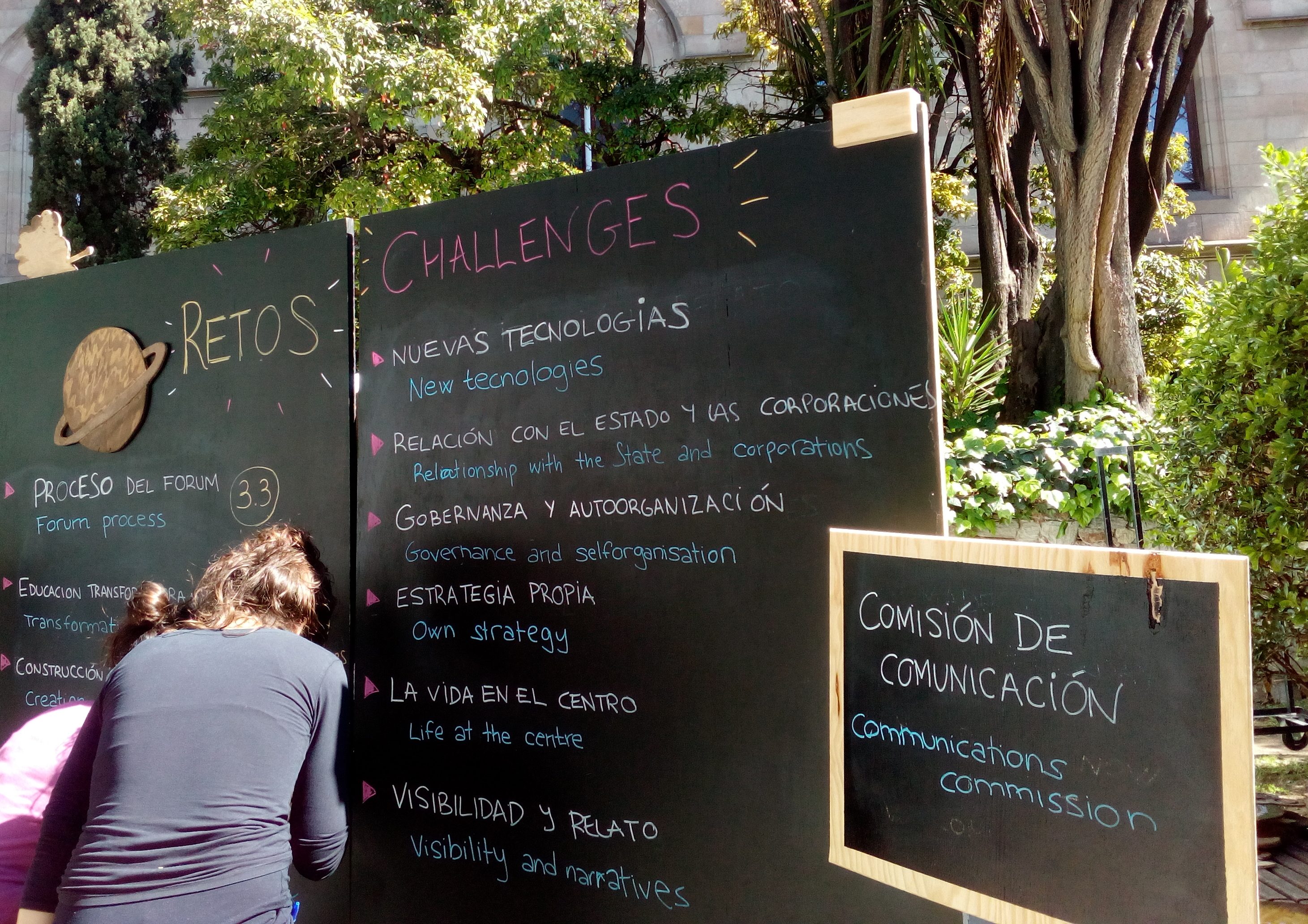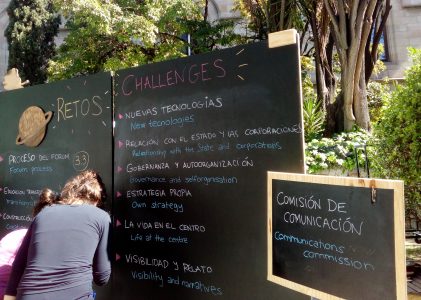In the opening session of the preparatory meeting of the World Social Forum of Transformative Economies (WSFTE), a volunteer from a self-managed collective that provides technological equipment for translation and interpretation of multilingual events (Coati) had the first word. There were more than 300 participants from roughly 50 countries and 5 continents present in the ceremonial Aula Magna of the University of Barcelona. Before giving the floor to the institutional promoters of the event, the activist explained the DIY radio system available to facilitate group communication during the 3-day event across four different languages.
Representatives from the intercontinental, the Spanish and the Catalan networks of social and solidarity economy (RIPESS, REAS and XES, respectively) then took the microphone for a brief presentation. Eighteen years after the first World Social Forum, in Porto Alegre (Brazil, 2001) – with the motto “another world is possible” – a process of global convergence was about to begin to show that “another world already exists” through thousands of initiatives building real socio-economic alternatives everyday around the world.
The main objective of this process is to bring together social movements and projects which share the will to put people and the environment at the centre of the economy, to put an end to an economy based on extraction, growth, competition and the market, and to struggle towards collaborative, resilient societies which develop and reinforce strategic alliances and actions through working together. (transformadora.org)
Right after, once again, a group of volunteers and facilitators from different cooperatives and associations took to the stage to facilitate the collective presentation of the hundreds of people present in the room and to explain in a performative way the rules for inter-personal communication during the event – from how to deal with disagreements and try to reach consensus, to the meanings of different hands and arms signs to express whether one agrees, disagrees or is not understanding a given debate.

More than half of the opening session of the preparatory meeting of the World Social Forum concerned internal communication procedures. Whereas the institutional part was important to introduce and contextualize the event (what, who, how, when, why), the emphasis put on explaining internal communications shows how central it is in sustaining the complex process that was about to begin. Hands and arms gestures, low-cost radio devices, info points, signage cardboards and murals, hashtags, social media handles, virtual platforms, collaborative reporting systems – all are technologies that form part of the communicative ecology that supports such global convergence process between different movements, languages, cultures that are building up alternative economies around the world.
Communicative ecology?
The concept of communicative ecology (Foth & Hearn, 2007) builds upon the similar biological metaphor of McLuhan and Postman’s media ecology (“a media-centric view referring to the way in which media structure our lives and how they influence society”) but shifts focus to the socio-cultural contexts in which communication occurs. Defining it as “a milieu of agents who are connected in various ways by various exchanges of mediated and unmediated forms of communication”, it proposes three layers of analysis:
A technological layer which consists of the devices and connecting media that enable communication and interaction. A social layer which consists of people and social modes of organising those people (…). And finally, a discursive layer which is the content of communication – that is, the ideas or themes that constitute the known social universe that the ecology operates in. (Hearn & Foth, 2007)
The global convergence process of the World Social Forum of Transformative Economies, running up until May 2020, provides a rich context of analysis in the light of communicative ecology.
Which technologies are being used to help bringing together different movements from the alternative economy around the world? Who are the people, collectives, organizations, commissions supporting the communication processes that enable such convergence? How do they organize, decide, (re)produce their work? How do they elaborate discourse and convey the message aiming at such ambitious goal? How transformative is the communication of the transformative economies?
Questions I will try to answer in a paper I am working on now.

